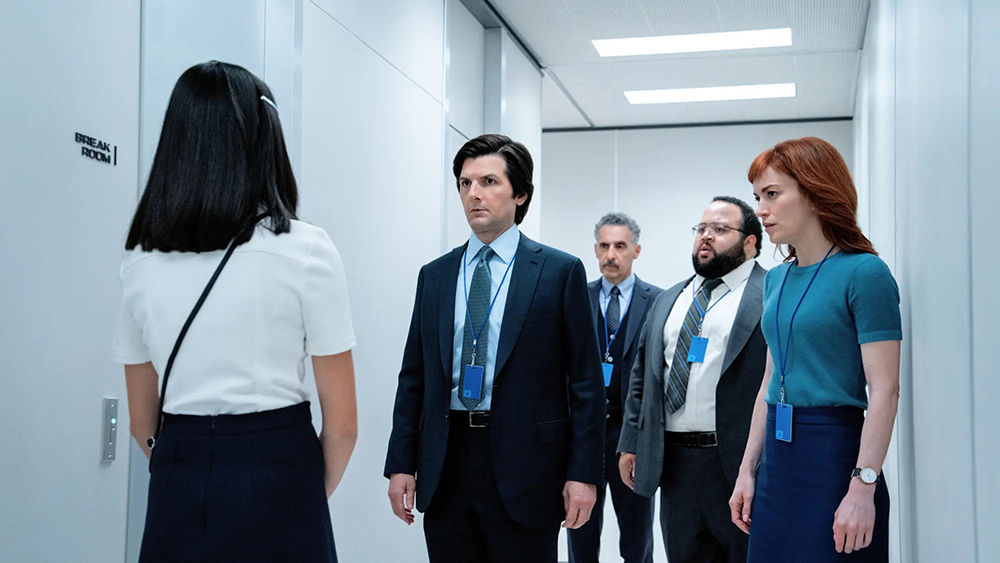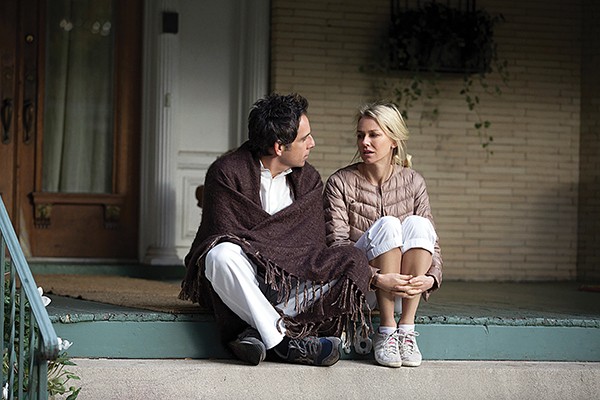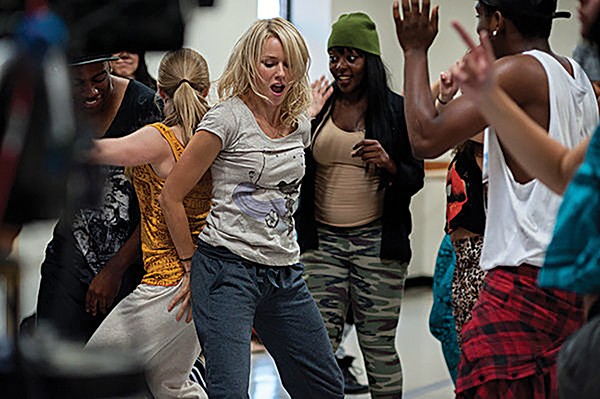Do you ever feel like a different person at work? Everyone has a work persona they put on, especially if you deal with the general public. For some people, the difference between their work self and private self is vast.
Severance, which just debuted its second season on Apple TV+, takes this observation to extremes. What if, instead of just watching your language and putting on a fake smile for work, you became an entirely different person? That’s what happens to Mark (Adam Scott) every time he steps into the elevator at Lumon Industries. He’s an “Innie,” someone who has had a chip implanted into his brain which creates a kind of split personality. When he’s in the office, he’s a macrodata refinement specialist, and not even he knows what that means. The work he and his co-workers perform just looks like staring into a computer screen and dragging random numbers and letters into a box. He doesn’t even know what criteria he’s applying.
When he’s not at work, Mark is a depressed mess, a widower whose pain is so acute he chose to spend a third of his life with his mind wiped. He has no idea what goes on in the basement of Lumon Industries, and, at least at first, he doesn’t care.
In season 1 of Severance, Innie Mark went from the model Lumon employee to being suspicious of his employer. And there’s much to be suspicious of. The Innies are indoctrinated into a weird cult of personality around late Lumon founder Kier Eagan (Marc Geller). When onboarding his newest co-worker Helly (Britt Lower) goes wrong, Mark takes the blame and gets a taste of the “benevolent” company’s discipline practice. At first, Mark’s suspicions fall on deaf ears, as Irving (John Turturro), a stickler for the rules, will hear no dissent. Eventually, Mark wants to know what his Outie is like, and, with the help of a secret group of formerly severed people, devises a plan that allows him to “wake up” outside. While there, he discovers a picture of himself with his wife and realizes that she is not dead. His Innie knows her as the company’s wellness specialist, Ms. Casey (Dichen Lachman).
Season 1 ended with a big bang, as Innie Mark and Innie Helly disrupted a company event to reveal that Lumon is torturing the Innies. It was hard to imagine where showrunner Dan Erickson and executive producer Ben Stiller could go after that. It seems that they weren’t so sure either, so season 2 comes three years after season 1. Granted, they were interrupted by the WGA/SAG strikes, but the long-cooking first episode of the new season is promising. It takes place entirely within the confines of Lumon’s stark white, retro-futuristic offices. Innie Mark is back, and this time, it seems, he’s a willing subject. But he’s got a secret agenda — to find Ms. Casey, who has disappeared from her wellness center, and reconnect with the wife he thought he had lost.
Severance’s metaphorical depiction of the alienation of labor in late-stage capitalism has struck a nerve. It’s not heavy-handed because it follows the rules suggested by the premise and expands on them to reveal more pieces of the bigger puzzle. The parade of heavy-hitting acting talent, including Patricia Arquette and Christopher Walken, doesn’t hurt either. Ultimately, the mystery boxes (why is Mark’s wife alive? What does Lumon Industries even do, anyway?) driving the plot are not the point. It’s the atmosphere of impersonal despair with a happy face plastered on top that makes Severance compelling television.
Severance is streaming on Apple TV+.


